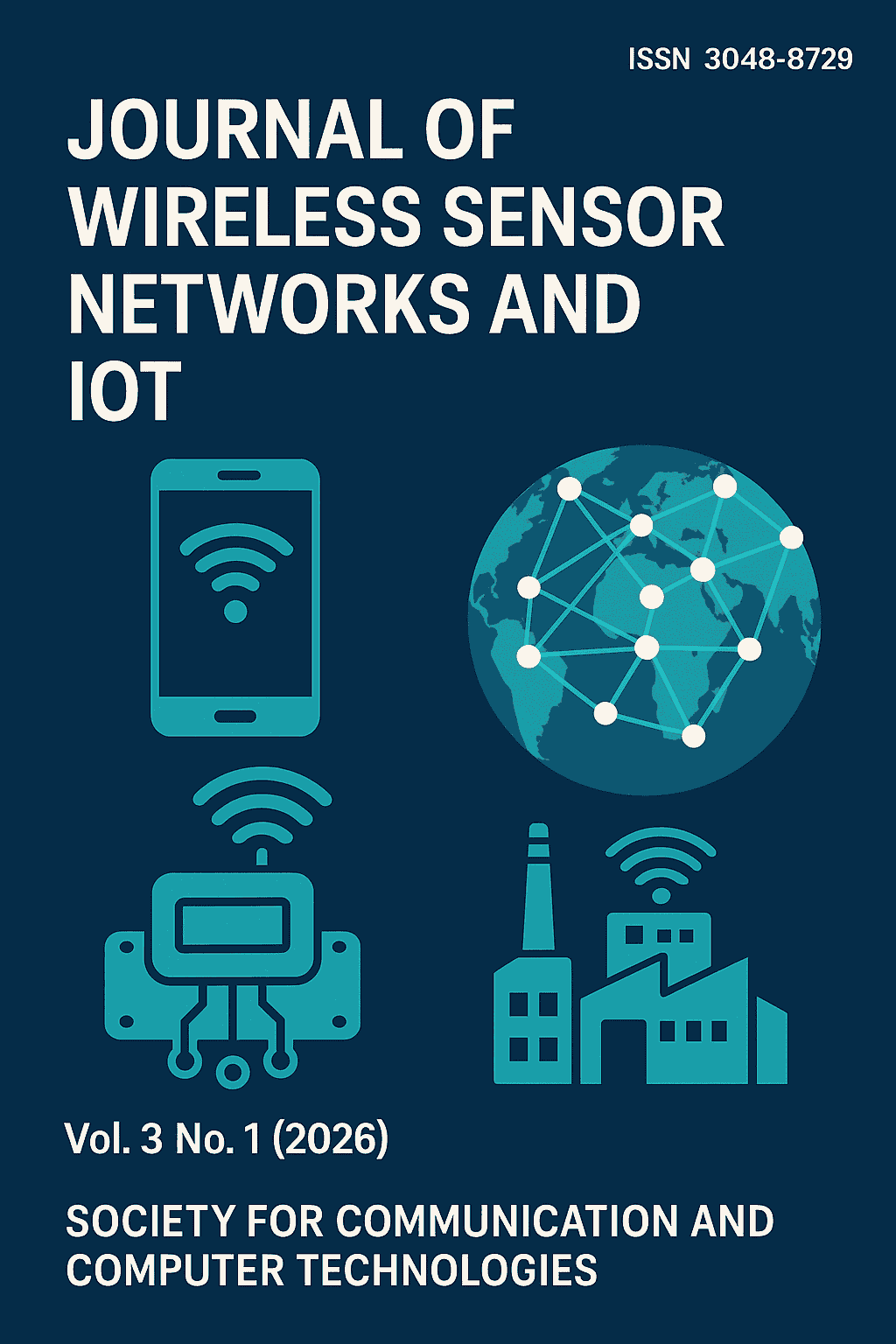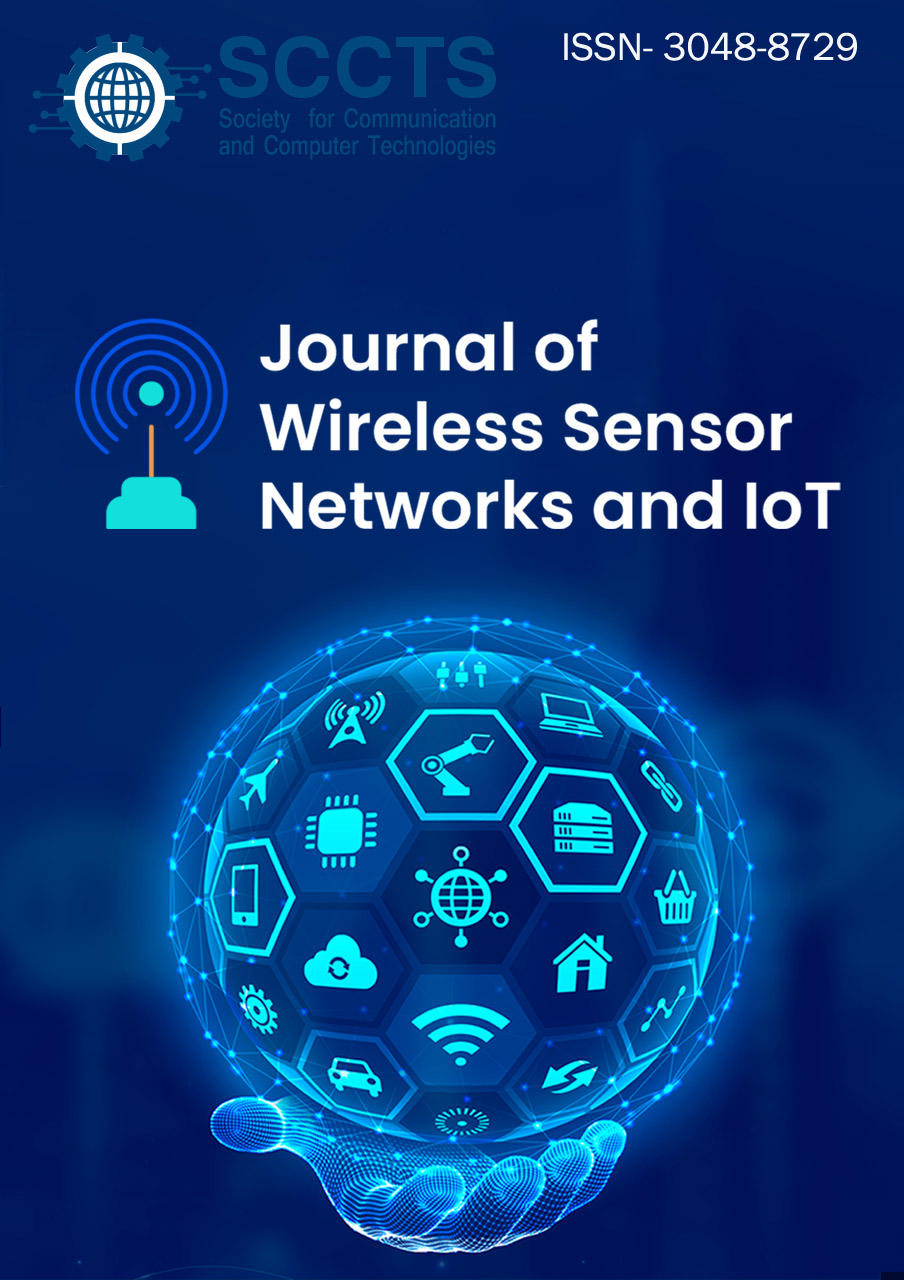5G-Enabled Wireless Sensor Networks for Time-Critical IoT Applications: Design Challenges and Opportunities
DOI:
https://doi.org/10.31838/WSNIOT/03.01.04Keywords:
5G, Wireless Sensor Networks (WSNs), Time-Critical IoT, URLLC, Edge Computing, Network Slicing, Latency, mmWave, Real-Time Communication, Smart SensorsAbstract
This has created a new paradigm of implementing time-constrained Internet of Things (IoT), in sectors like, industrial automation, smart transportation, healthcare monitoring, and disaster response systems by integrating fifth-generation (5G) wireless communication with the Wireless Sensor Networks (WSNs). Conventional WSNs, based on historic communication protocols such as IEEE 802.15.4 or LoRa, are bound to suffer fundamental impediments to ultra-reliable low-latency communication (URLLC), especially during massive deployment of nodes or when nodes come to be mobile or harsh. This paper provides in-depth study of the design principles, system architecture and performance trade-offs when constructing 5G-enabled WSNs able to satisfy the strict services of latency and reliability. We suggest the combination of edge and cloud networks according to the so-called hybrid edge-cloud where the advantage of the 5G peculiarities such as the network slicing, massive MIMO, and millimeter-wave (mmWave) communication are used to prioritize essential traffic, decrease transmission latency, and guarantee high compliance of packet delivery. The architecture also includes NR-Light nodes, SDN-based slicing management as well as edge intelligence offering real-time analytics and distributed decision-making. Both simulation (with NS-3 and 5G NR modules) and hardware prototyping (the usage of 5G modem-equipped sensor nodes and edge servers) confirm the described approach. The outcomes show the up to 68 percent cut of end-to-end latency and a +45 percent increase in QoS compliance in comparison to LTE-based WSN systems. In addition, power overheads are minimised by energy-sensitive scheduling and node sleep cycles despite the addition of higher-throughput 5G radios. According to our results, 5G integration greatly increases WSNs scalability, responsiveness, and efficiencies in a mission-critical environment. Lastly, we describe future directions with AI-based resource optimization, the 6G extensions and lightweight security mechanisms that are suitable with URLLC sensors. The framework that is suggested provides an energy-efficient, scalable framework of the next-generation WSN in line with the trending needs of smart environments and the Industry 5.0 agenda.






